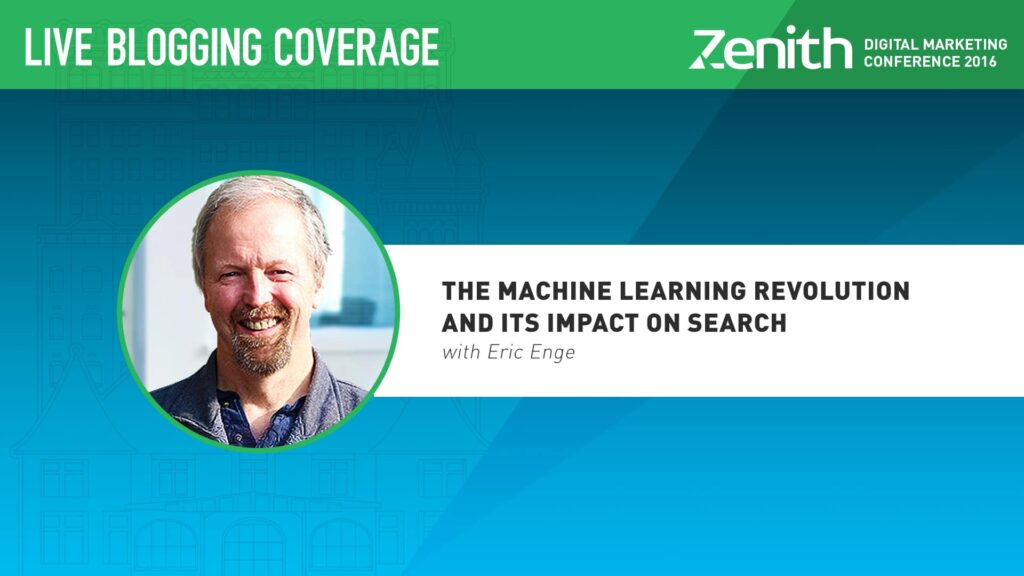Eric is the founder and CEO of Stone Temple Consulting and writes for Search Engine Land, Moz, Marketing Land and so much more. Eric is also the author of The Art of SEO – 992 pages of “light reading.” We’re thrilled to have him in Duluth! Eric once walked 25 feet across hot coals and spent four days camping in -40º weather. Then he built his own machine learning algorithm to predict retweets. So he doesn’t mess around.
What does RankBrain mean for our search campaigns and SEO? What should we expect to see from Google as RankBrain evolves?
Let’s walk through how machine learning works. First you input data to train the algorithm. Eric built one that took 45 billion calculations to teach it self to make predictions. This is the expensive part. Once it can start predicting outcomes you can deploy it and put it to use.
Practical implication: Machine learning can learn to recognize a face. But not just a face! Is it smiling? Frowning? Algorithms figure it out.
Use Google News? It uses unsupervised machine learning to suggest related articles based on an algorithm that analyzes the language of news sites to identify degrees of similarity. If something is closely related, News suggests it.
There are 10(100) atoms in the known universe. So what? There are 10(171) possible positions in the game of Go. DeepMind’s AlphaGo algorithm beat the world champion. Whoa!
Let’s talk RankBrain. It was announced in October 2015. Google uses it to better understand the meaning of user search queries.
Language analysis concepts: Stop words – words that if you take them out of a search query it won’t impact Google’s ability to match the query to the web page very much. Helps Google get rid of extraneous language. Sometimes though it can change the query a lot. Think: The Office or Office. RankBrank helps figure out whether you’re trying to find out about the TV show of the Microsoft software. How? RankBrain recognizes when The and Office are capitalized it is more likely to mean the TV show. Or if a query for Coach is capitalized it could mean the fashion maker. This is what Google asks RankBrain to help figure out.
RankBrain converts phrases into what Google calls Vectors, or numerical representations. Then it analyzes the patterns of language each Vector, or word, is used in.
Think of all the words with multiple meanings: The, graphic, without. Being able to understand how that is used in each query gives Google the ability to provide better search results.
What does RankBrain do then? It analyzes language across the web to improve Google’s understanding of language. Then it applies what it learned to user queries and improves relevance matching. Result: Sometimes it can select a different algorithm for Google to use in order to give better search results.
How is this different? The original algorithm used without as a stop word. Now it understands that without can often have a real meaning that applies to what the user is searching for.
Eric and his team have looked at more than 500,000 query results from before and after RankBrain to see how it improves results.
Building a machine learning algorithm takes a looooooooooong time.
Few people advocate wholly replacing a human-built algorithm with a machine one. When do we apply machine learning? When coming up with human algorithms becomes impossible.
How do you gain an advantage? Skate to where the puck is going, not where it’s been. Build your brand. Have a recognizable expert. Review your engagement data. Design your site for smartphone users. It ALL matters.
That’s a wrap!









